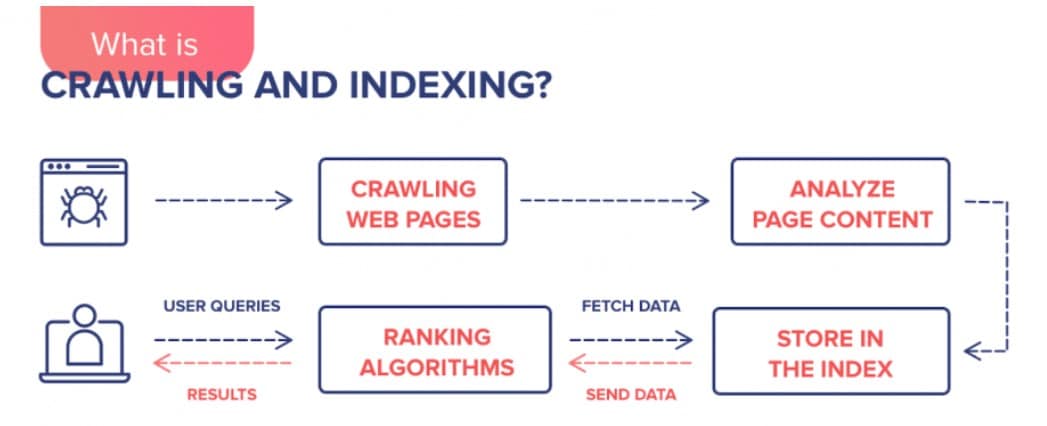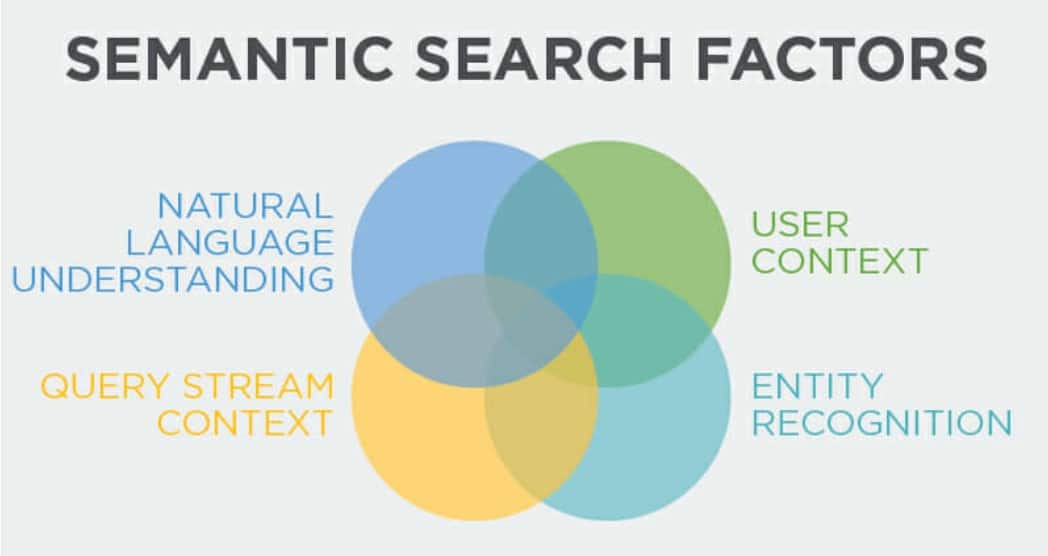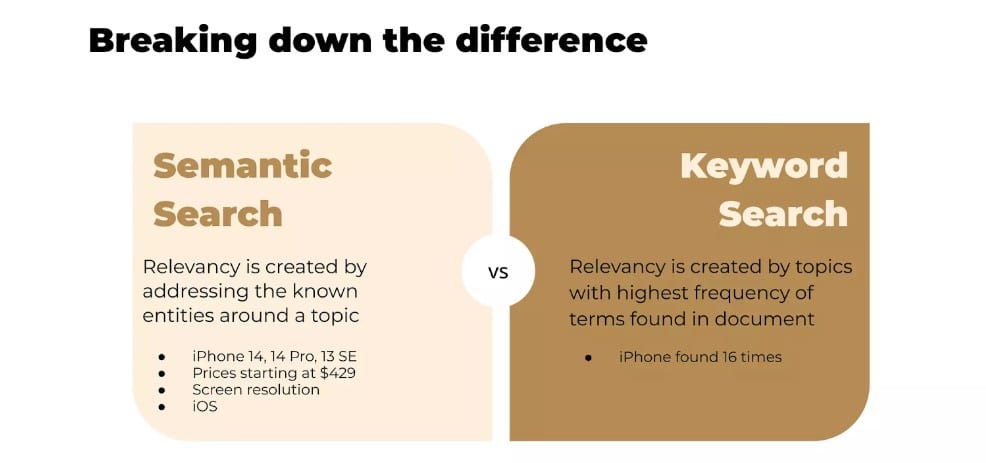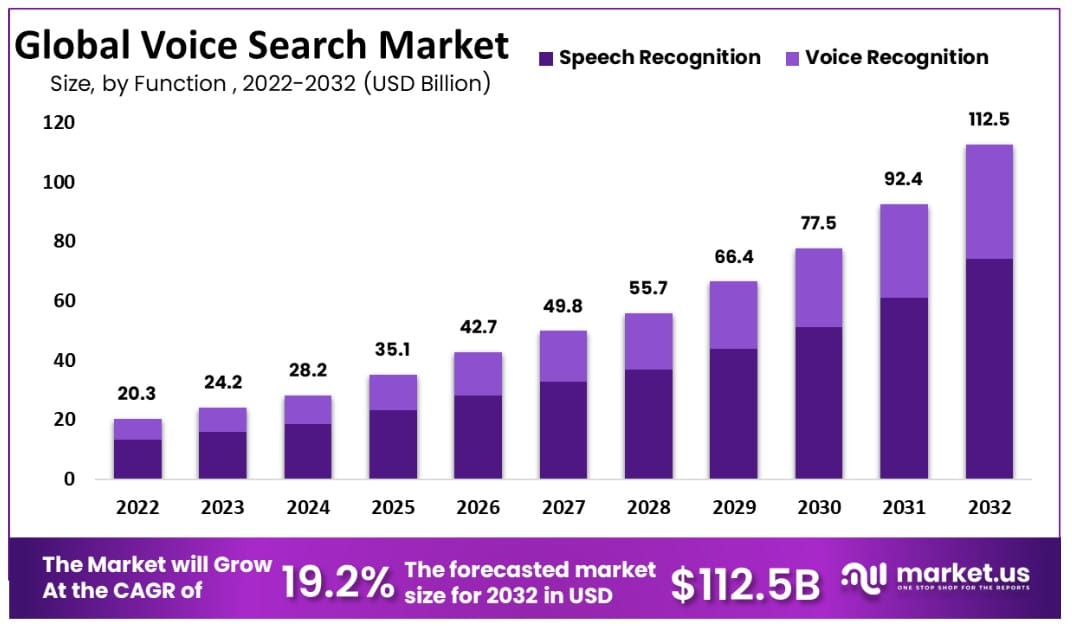Wondering about the relative merits of semantic search vs keyword search?
When it comes to optimizing your SEO strategy, it’s vital to be aware of how these two processes work. Understanding how search engines negotiate today’s online environment is the key to reaching potential customers more effectively.
This article explains what keyword-based and semantic search are, and how you can develop a strategy that dovetails with them to deliver great results for your business.

Semantic search vs keyword search: What’s the difference?
The importance of SEO in driving business growth is well known. And achieving effective SEO requires a hybrid approach that incorporates many elements such as website optimization and producing a regular stream of good quality content. The ultimate objective is to perform well in search engine rankings, which have a profound influence on how well your company can reach out to new customers.
In addition to website optimization and producing quality content, selecting the right business name is also critical for effective SEO. This decision impacts the keywords associated with your brand, shaping how users search for your products or services, and thus plays a significant role in both semantic and keyword search strategies.
For decades, keyword searches have been the fundamental driver of how search engines work. The user types a search query into the input field, and the search engine looks for pieces of content that include those keywords. So far, so simple.
But now, there’s a new kid on the block.
The acceleration in machine learning capabilities we’ve witnessed over the past few years has brought an alternative into play: semantic search. This uses techniques like natural language processing to determine the broader context of the search terms. The goal is to assess the user’s search intent more accurately so the search engine can return the most relevant content.
So, let’s take a deep dive to examine exactly how the engine works in each case.
How semantic search and keyword search work
Between Facebook shadow banning and the constant changes to Google’s algorithm, making sure your content is always visible and accessible can be challenging. But it’s vital that people can easily search for and locate your content in today’s digital landscape. That’s where different search methods like keyword and semantic search come into play.
Having a deep understanding of how these two processes handle user queries helps when it comes to deciding your strategy. With that in mind, here’s a brief explanation of how each one determines search rankings.
Keyword search
Traditional keyword-based search uses keyword matching to compile a list of potential results via a technique known as indexing.

Image sourced from seranking.com
When a search engine discovers a page it hasn’t encountered before, it tries to understand what it’s about by analyzing the content and the content tags and attributes. If it determines that the page isn’t a duplicate of an existing one, it adds the page to the index.
Essentially, this involves creating a list of terms found on each page. When a user sends a search query, the search engine checks to find matches for those keywords in the index.
Once it finds the pages featuring these keywords, it then has to rank them in terms of how well each one fits the user intent to reduce the possibility of returning irrelevant search results. It does this using an algorithm primarily based on two factors:
- Term frequency: the number of times the keyword appears on the page
- Rarity: how rarely it appears across the entire body of pages in the index
Pages featuring rarer keywords will be ranked higher in the algorithm. For instance, if you search for “pink elephants”, it’s likely that the word “elephants” isn’t as common as the word “pink”. In a purely keyword-driven search, that means pages featuring the word “elephants” will be assigned a higher score by the algorithm and be served further up the rankings.
Optimizing content for keyword search is a standard part of SEO strategy for SaaS businesses, ecommerce stores, and any number of other enterprises precisely because it’s still a fundamental part of how web search works.
But today, it’s becoming ever more important to consider semantic search too.
Semantic search
Semantic search technologies have come on in leaps and bounds over the past few years, and it’s easy to see why. While keyword-based searches are extremely useful for finding exact keywords in a corpus of documents, they don’t involve any in-depth comprehension of the nuances of language.
By contrast, semantic search uses deep learning models to establish the semantic meaning of the user’s query in context. It analyzes the relationships between the words in the query to determine the most relevant search results rather than depending on exact keyword matching.

Image sourced from wetech.co.za
And human language is sophisticated. Grasping the contextual meaning of a query can have a huge impact on how results should be ranked in terms of content relevance.
To illustrate the point, consider this query: “how old is the president?”
A keyword search would look for matches for the words and return pages that featured them, with no regard for the underlying meaning of the question.
Meanwhile, a semantic search would use machine learning to arrive at a deeper level of understanding of the intent behind the question. It will grasp that you want to know the current age of the president of the United States, and serve you the answer directly.
Keyword and semantic search: Pros and cons
At this point, you might be thinking that a semantic search engine would always be superior to a keyword-powered one. In truth, it’s not quite as simple as that. This is why most experts providing B2B SEO services still focus heavily on keywords as part of their offering.
Keyword search
Traditional keyword search has a number of upsides as well as a few drawbacks. Using individual keywords can work very well if you want to search for something specific in, say, news articles or academic papers. But its functionality is limited.
Pros:
- Straightforward approach that most developers are familiar with implementing.
- Transparency: users can see the exact terms that appear in the results.
- Plenty of sample applications and pre-built components available thanks to the fact it’s been around for a long time.
Cons:
- Less effective at processing natural language queries
- Can’t sense context, so has the potential to return irrelevant results

Image sourced from slideshare.net
Semantic search
True, semantic search makes for a very intuitive search experience, and it’s particularly well-suited to applications like voice search that rely heavily on understanding natural language. But it’s not a perfect solution either.
Pros:
- Can answer questions posed in natural language more effectively, making for a better user experience.
- Gives more comprehensive search results because it can identify synonyms and variations of the search terms.
- Takes context into consideration, so can distinguish between different meanings of the same word.
Cons:
- Less effective if the available context is limited, e.g., if the search only comprises one or two words.
- Less transparent in its execution; it can be tricky to understand why certain results were returned.
- Needs a lot of computational power and uses optimization algorithms that can reduce accuracy.
Knowing the benefits and downsides of keyword and semantic search puts you in a good position to improve your approach to content marketing. It can also help you fine-tune other important areas, such as your social media strategy, because it gives you a deeper understanding of how SEO works in the modern digital environment.
Search strategy: The PR and marketing perspective
From the point of view of PR and marketing, it’s vital to be aware of how search engines are developing. It’s not just that search algorithms evolve constantly. It’s also that user behavior changes in response, and it’s crucial to track how so that you can take advantage of new opportunities as they present themselves.
To take one example, consider voice search. If you run an ecommerce site, it’s important to be aware that 50 percent of people in the 25-34 age group use voice search daily, many of them for online shopping. This has a number of implications for your SEO strategy.

Image sourced from speechtechmag.com
For instance, you should tweak your content to prioritize the following elements:
- Make it friendly to conversational search queries by incorporating long-tail keywords.
- Structure it to answer common questions directly e.g., by making good use of FAQ sections.
- Optimize it for featured snippets, as these are commonly used by voice assistants to give answers to questions.
Another key point to note is that modern search algorithms present the opportunity for more targeted personalization, which can vastly improve the customer experience.
Now, you can’t control which results a search engine chooses to show a user. But what you can do is create suitable content that gives the search engine something to work with, making it more likely your page will rank higher.
Let’s say your business targets international users. One element of personalization you could cater to in that case is multilingual support. Creating content in different languages takes advantage of the way location-based search works.
The result? Users will appreciate being served content in their own language. This may seem like a small thing, but that kind of attention to detail can have a huge impact on a company’s brand reputation in the long run.
Final takeaway: Developing a search strategy that works
Keeping up with developments in search is crucial. As user habits evolve, it’s important to get ahead of the field so that your company is well-positioned to benefit.
Semantic search has changed the rules of the game when it comes to SEO strategy. While traditional keyword search still has a crucial role to play, you can no longer depend on a keyword-focused strategy alone.
The good news is that there are now more opportunities for companies that understand this. Modern search algorithms have shaped an environment that allows you to reach customers more effectively than ever before. The trick is knowing how to make it work for your business.








